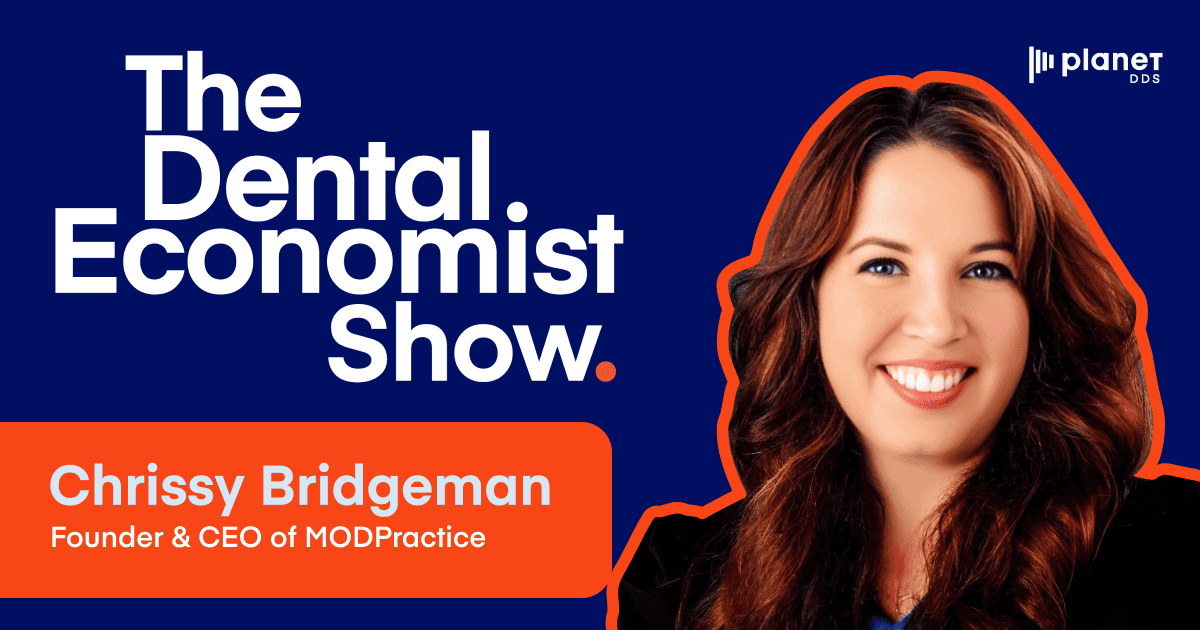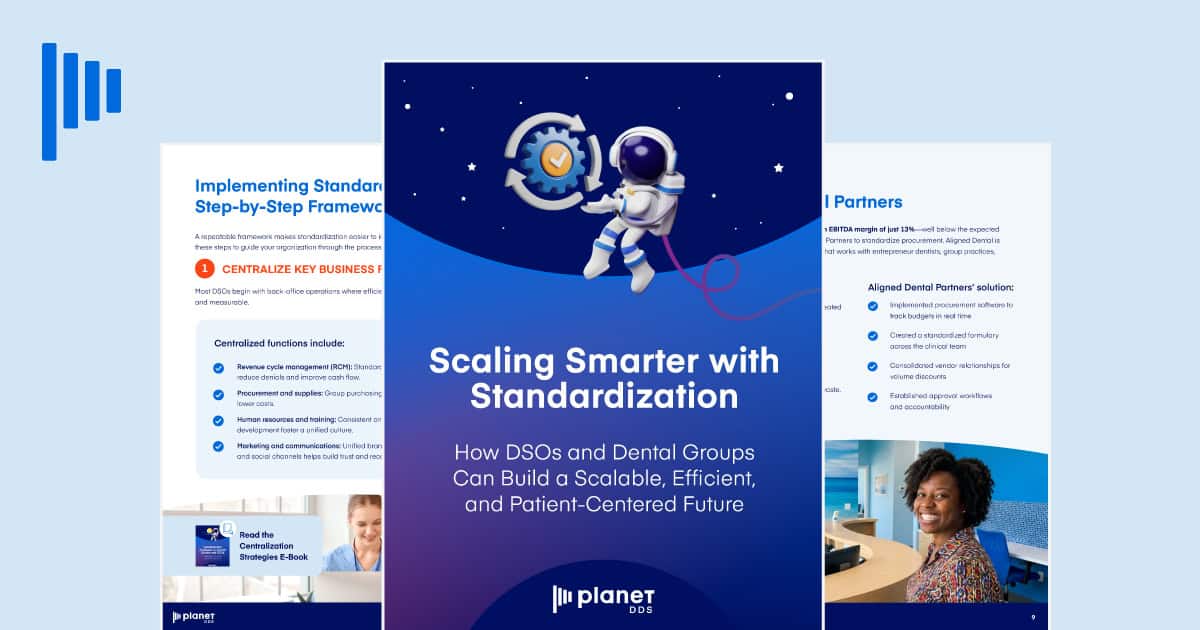Chrissy Bridgeman on Turning $1.7M in AR into a Scalable Revenue Engine

Optimizing a dental organization’s revenue cycle takes more than software; it takes strategy, systems, and people. In this episode of The Dental Economist Show, host CRO Mike Huffaker of Planet DDS sits down with Chrissy Bridgeman, CEO and Founder of MODPractice, who describes herself as both a “revenue cycle janitor” and an “engineer.” With years of hands-on experience cleaning up accounts receivable and designing scalable billing operations, Chrissy shares how true revenue cycle management (RCM) excellence lies at the intersection of automation and human expertise.
She unpacks the real causes of revenue leakage, the dangers of fragmented processes across multiple practices, and why the best DSOs centralize operations only when they hit the right scale. From achieving 90% first-time claims success to transforming $1.7M in aged AR into a clean ledger, her insights reveal what it really takes to build a high-performing, transparent revenue cycle that supports both profitability and patient experience.
Whether you’re managing a single practice or overseeing a growing DSO, this episode is packed with practical strategies on centralization, data-driven accountability, and the balance between technology and human touch.
What you’ll learn:
- How to determine the right time to centralize billing operations (hint: three practices is the tipping point)
- Why focusing on claim submission quality is crucial for achieving 90 to 95% first-time acceptance rates
- The “patient-first” approach to handling unexpected billing situations and maintaining trust
- How to strategically implement AI and automation tools while recognizing their current 50% effectiveness limit
- Why proper insurance verification and documentation upfront prevents downstream revenue issues
- The importance of matching team members’ strengths and preferences to specific revenue cycle roles
- How to effectively communicate insurance downgrades and unexpected costs to maintain patient relationships
Episode Highlights
In this episode, host Mike Huffaker and Chrissy Bridgeman break down why embracing change and leveraging automation is key to building a smarter, more scalable revenue cycle. Here are some highlights from the show:
The three-practice threshold for centralization
Chrissy Bridgeman reveals that practices should centralize their billing operations once they reach three locations. This strategic move allows practices to aggregate call centers and billing teams while enabling in-office staff to focus entirely on patient experience. The centralization threshold addresses the common challenge of balancing administrative efficiency with quality patient care.
To implement effectively, practices should start by consolidating insurance-related tasks and documentation processes into a dedicated team. When executed properly, this approach leads to improved patient satisfaction and stronger referral networks, ultimately driving practice growth.
Achieving 90% first-time claim acceptance
A best-practice goal for dental practices is achieving a 90 to 95% first-time claim acceptance rate, according to Bridgeman. The key to reaching this benchmark lies in thorough insurance verification and proper documentation submission upfront. Many practices struggle with repeated claim submissions and denials, which creates unnecessary administrative burden and delays revenue collection.
Implementation requires establishing robust systems and processes for gathering and submitting supporting documentation with initial claims. This proactive approach significantly reduces denial rates and accelerates payment cycles, improving overall practice cash flow.
Transparent patient communication about costs
Bridgeman emphasizes the importance of upfront communication and transparency when handling unexpected patient balances. Effective patient financial communication begins with accurate treatment estimates and proper documentation of potential insurance downgrades.
When surprises do occur, the key is to break down the situation clearly, explaining insurance decisions and policy limitations in straightforward terms. This approach helps maintain patient trust and increases likelihood of payment, while reducing the perception of “bait and switch” tactics that can damage practice reputation.
Specialized team roles in revenue cycle management
Bridgeman advocates for matching team members with roles that align with their strengths and preferences in RCM. This specialized approach recognizes that different team members excel at different aspects of the billing process, from insurance verification to payment posting.
Implementation involves conducting personality assessments and having direct conversations about role preferences and learning interests. When properly executed, this strategy leads to higher team satisfaction, reduced turnover, and improved overall revenue cycle performance.
The Dental Economist Show
Don’t miss insightful conversations with industry experts on the latest trends and top strategies to grow your DSO or dental group. Tune in to The Dental Economist Show each week as we meet at the intersection of profit and purpose.
Listen to the full podcast:



